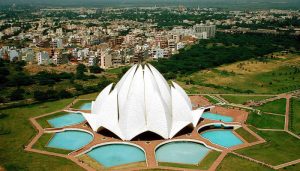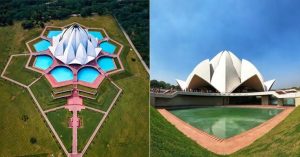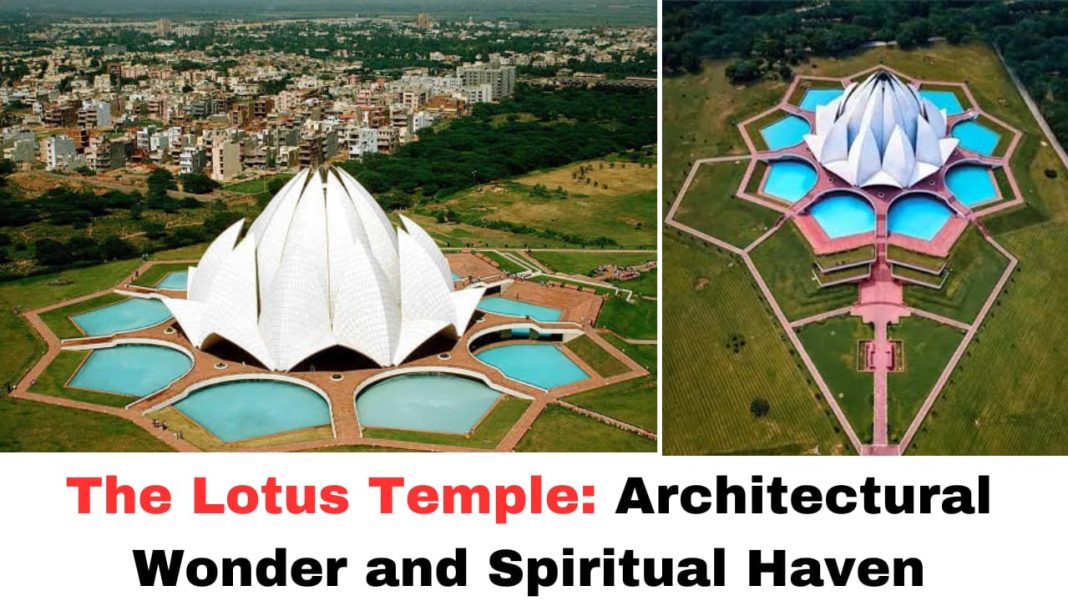Digital News Guru Delhi Desk:
The Lotus Temple: A Symbol of Unity and Peace
Located in the heart of New Delhi, India, the Lotus Temple stands as a striking symbol of religious harmony, peace, and the unifying power of spirituality. Its unique, lotus-flower-inspired architecture, along with its inclusive message, has made it one of the most visited and revered places in the world. As the Baháʼí House of Worship, it serves as a testament to the Baháʼí faith’s principles of unity, equality, and the oneness of all religions.
Origins and Construction of the Lotus Temple
The idea for the Lotus Temple originated in 1976, when the Baháʼí community in India sought to establish a permanent House of Worship in New Delhi. The Baháʼí faith, which originated in the mid-19th century in Persia (modern-day Iran), emphasizes the oneness of humanity, the unity of God, and the unity of religion. As part of its practice, the faith encourages the construction of Houses of Worship that are open to people of all religions, races, and backgrounds. Each temple is designed to accommodate prayer and meditation while embodying the core beliefs of the Baháʼí faith.

The Lotus Temple’s construction was an ambitious and groundbreaking project. Designed by the Iranian architect Fariborz Sahba, the temple’s form was inspired by the sacred lotus flower, a symbol of purity and beauty that is significant in many cultures and religions. The lotus, with its ability to bloom in muddy waters, symbolizes the potential for spiritual transcendence amidst the challenges of the world. The design also reflects the Baháʼí emphasis on beauty, simplicity, and harmony with nature.
The construction began in 1980 and was completed in 1986. Despite challenges such as the complexity of its design and construction in a city with a hot and humid climate, the Lotus Temple was successfully built and has since become a major architectural marvel. The temple is an exemplary blend of modern technology and ancient symbolism, which has attracted millions of visitors worldwide.
Architectural Features of the Lotus Temple
The Lotus Temple is renowned for its stunning architectural beauty, which combines traditional and modern elements. The structure itself consists of 27 marble-clad “petals,” arranged in clusters of three to form the shape of a lotus flower. These petals are made of white marble and are arranged in a way that allows natural light to filter through, creating a tranquil atmosphere inside the temple. The petals are not only a visual wonder but also symbolize the Baháʼí principle of unity and diversity, as each individual petal represents a different religion or faith, yet they come together to form a single harmonious whole.
The temple’s central dome, which rises to a height of 40 meters, is supported by nine entry paths, each leading to the inner sanctum of the temple. The interior of the temple is serene and minimalist, designed to facilitate prayer and contemplation. The central hall can accommodate up to 2,500 people, and the floor is made of pure marble, contributing to the peaceful and sacred atmosphere.

The surrounding grounds of the Lotus Temple are just as impressive. The temple is set amidst lush green gardens and pools of water, enhancing the overall feeling of calm and tranquility. The temple is surrounded by nine beautifully landscaped gardens that serve as a space for visitors to reflect and connect with nature. The well-maintained grounds also provide a sense of harmony between human creativity and the natural world.
Religious Significance and Inclusivity
At its core, the Lotus Temple is not just an architectural masterpiece, but a place of worship for people of all faiths. The Baháʼí faith, to which the temple belongs, emphasizes the oneness of God, the oneness of humanity, and the oneness of religion. It teaches that all the major religions of the world have their origin in the same divine source and are part of a continuous, progressive revelation that has taken place throughout human history.
This principle of religious inclusivity is reflected in the Lotus Temple’s invitation to people of all backgrounds, beliefs, and religions to come and pray, meditate, or simply reflect. The Baháʼí House of Worship does not conduct any rituals, ceremonies, or formal services. Instead, it is a place where individuals can come to connect with their higher selves, reflect on universal truths, and experience the peace that comes from unity and love. The temple does not distinguish between people based on their faith, race, or nationality, reinforcing the Baháʼí belief in the inherent equality and dignity of all human beings.

Unlike most religious buildings, which are dedicated to a particular faith or tradition, the Lotus Temple stands as a symbol of interfaith harmony and acceptance. It invites everyone, regardless of their religious background, to engage in personal reflection and prayer. This inclusive message has helped the Lotus Temple become one of the most recognized symbols of peace and unity in the world.
Global Recognition and Popularity
The Lotus Temple has garnered widespread acclaim for both its architectural beauty and its message of unity. It is considered one of the most visited buildings in the world, attracting millions of tourists and pilgrims from around the globe every year. Since its opening in 1986, the temple has become an iconic landmark in New Delhi, frequently featured in global travel magazines and documentaries.
One of the reasons for its popularity is the open invitation the temple offers to all visitors, regardless of their religious background. The Baháʼí community’s commitment to the principle of unity and their non-denominational approach to worship have made the Lotus Temple a place of spiritual solace for people of various faiths.
In addition to its popularity with tourists and pilgrims, the Lotus Temple has been recognized for its contributions to architecture. It has won several national and international awards for its innovative design and has been featured in numerous publications and exhibitions.

Conclusion
The Lotus Temple is a powerful symbol of the Baháʼí faith and its core tenets of unity, peace, and inclusivity. Through its awe-inspiring architecture, tranquil atmosphere, and universal message, the temple stands as a beacon of hope in a world often divided by religious, cultural, and political differences. More than just a place of worship, the Lotus Temple offers a space for reflection, connection, and understanding, inviting all people to come together in the spirit of peace and love. Its enduring popularity and architectural beauty make it a testament to the power of faith, art, and humanity’s shared desire for unity and harmony.
You May Also Read: Bryan Adams’ India Tour Goes Green: A Musical and Environmental Milestone








